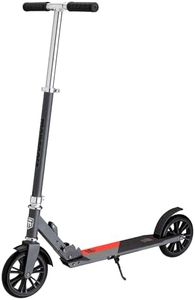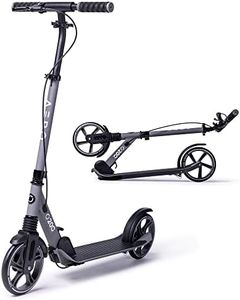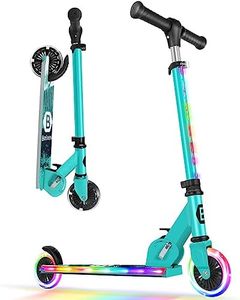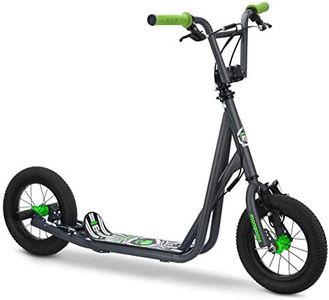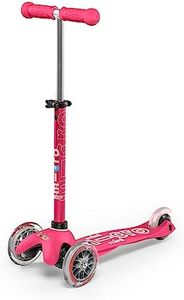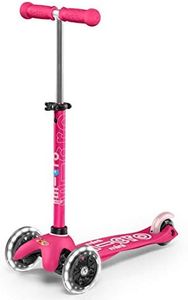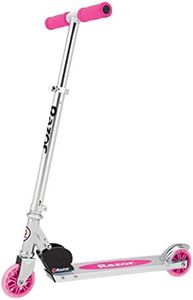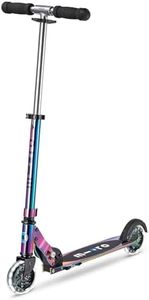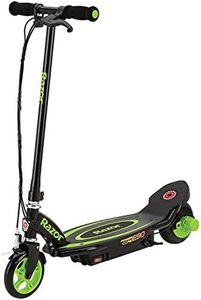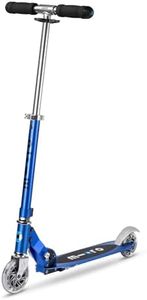We Use CookiesWe use cookies to enhance the security, performance,
functionality and for analytical and promotional activities. By continuing to browse this site you
are agreeing to our privacy policy
10 Best Scooter For Kids
From leading brands and best sellers available on the web.Buying Guide for the Best Scooter For Kids
Choosing the right scooter for kids is about ensuring safety, ease of use, and fun. The right scooter should match a child’s age, physical abilities, and intended use—whether it’s for casual rides around the neighborhood, commuting to school, or adventurous play at the park. As you compare scooters, focus on key specifications that influence comfort, stability, growth potential, and maintenance. It’s always helpful to involve the child in the selection process to make sure they like the design and feel confident riding.Wheel SizeWheel size affects how smooth and stable the ride will be. Smaller wheels, typically around 100-120 mm, are lightweight and make the scooter easy for young children to maneuver, but they might feel bumps more. Larger wheels, over 120 mm, roll more smoothly over cracks and uneven surfaces, making them ideal for older children or those riding longer distances. When choosing wheel size, consider the child’s age and the typical riding surface; younger kids or beginners may prefer smaller wheels for easier handling, while older or more confident riders may benefit from larger wheels for comfort.
Deck Height and WidthThe deck is where the child stands, so its size and height matter for comfort and stability. A lower deck (closer to the ground) is easier for kids to push and balance, while a wider deck provides more space for feet, which is helpful for beginners. Narrow decks allow for easier turns but require better balance. For young or beginner riders, look for a lower and wider deck; for more experienced or taller kids, a slightly higher or narrower deck may be suitable.
Handlebar Adjustable HeightAdjustable handlebars let the scooter grow with your child, providing better posture and control. Handlebars set too low can cause hunching, while those set too high make steering awkward. Choose a scooter where the handlebar can be adjusted to approximately waist or hip height when the child is standing on the deck. This ensures both comfort and safe control as the child grows.
Number of WheelsScooters come with either two or three wheels. Three-wheeled scooters are great for younger children or beginners because they offer extra stability and are less likely to tip over. Two-wheeled scooters are better suited for older kids who have developed more balance and coordination, and they often allow for more speed and tricks. Match the number of wheels to the child’s experience—three for safety and learning, two for speed and skill.
Frame MaterialMost kids’ scooters are made from aluminum or sturdy plastic. Aluminum scooters are lightweight, making them easier to carry, yet are strong enough to handle rough play. Plastic models might be lighter and more affordable but could lack the long-lasting durability of metal. Consider aluminum for kids who will use the scooter frequently or over rougher ground, and plastic for very young children or for limited, gentle use.
Brake TypeMost kids’ scooters use a rear foot brake that children step on to slow down. Some have hand brakes similar to bicycles. Foot brakes are simple and intuitive, making them best for beginners, while hand brakes require more coordination and are generally better for older children. Choose according to your child’s age and confidence: foot brakes are ideal for ease and safety, while hand brakes are good for those with better hand-eye coordination.
FoldabilityFoldable scooters are easy to store and transport, which can be a big advantage for families on the go or with limited storage space. Some scooters are fixed and more robust but may be bulkier. For kids who need to bring their scooter to school, in the car, or on trips, foldability is a major convenience. However, if the scooter will stay mostly at home, a solid fixed-frame may be preferable.
Weight LimitEach scooter has a maximum weight it can support safely. Exceeding this limit can damage the scooter and increase risk of accidents. Make sure to pick a model that comfortably supports your child’s current weight with room for growth, ensuring both safety and lasting use.
